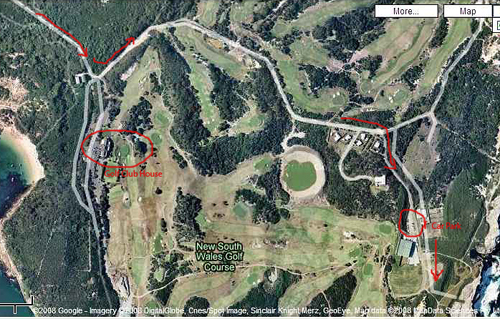An easily accessible coastal location, this island provides rugged sunrise views to the East and evening view to the West.
Special Photographic Features or Notes:
This island faces West with views across the water to the setting sun. This is unusual in the Sydney setting. It has carved sandstone rock faces, interesting rock formations and ledges and at the far end is a rusting ship wreck, sitting high up in boulders. The steam ship Minmi was built in Glasgow, Scotland in 1927. She was 75 metres long, with a displacement of 1455 tons. She was employed as a collier (coal carrier) routinely carrying coal from Newcastle to Melbourne, Australia. On May 8, 1937, Minmi’s acting master, Chief officer Robert Clark Callum, departed Melbourne bound for Newcastle with no cargo. Late that evening the ship struck the outside of Cape Banks, the outer northern headland of Botany Bay. Due to the heavy seas, it was a desperate situation and her crew was unable to make to shore without help. The ship’s cook, suffered a heart attack and died shortly after the ship went aground on the rocks of La Perouse peninsula. Fortunately, the nearby Cape Banks Artillery Garrison on Bare Island was alerted by the sound of escaping steam and immediately went to their aid. Within three hours of grounding, the steamer split in two with men stranded on both the bow and stern section
In my mind the best time is evening with a clear sky to the West which allows light and sunset light to bathe the island. This photo gives an idea of the patterns on the rock ledges and the location of the wreck at the end of the island.
Evening light works well just on sun set with the eastern horizon taking on that pink glow. The sandstone also comes alive in this light. Low tide gives you best access to move around
but all tides will provide photo oportunities. The wreck is high enough so only wave spray is a problem for your lenses.
The wreck is able to be walked on but care must be taken. It is surrounded by large boulders and good shoes should be worn. The ships superstructure makes a good silhouette subject.
And here is a photo taken by Brent Pearson of the intricate swirls on the rock ledges
Night Photography
There are no lights shining directly on the headland, so La Perouse is very suitable for night photography. If you are shooting back West you get the light glow from the lights of Sydney.
Best times of the day
Evening 1 hr before sunset and 1 hr after. As the main area for photos faces west sunrise light might be problematical.There is a curfew of 7.30pm which makes daylight savings problematic as a ranger will escourt you from the area. Suggest Winter as the best time to access the ends of the day.
Tidal Information
Mid to low tide will enable best access and more rock formations to photograph.
Getting There
Click here to view La Perouse in Google Maps
You can get there 24 hours a day but as the road in is through the NSW golf course entry road, I have provided two maps so you can find your way. Around 7.30pm you might be approached by a ranger and moved out which is a pain but the road is never closed or gated.
The first map shows Anzac Parade, the road to La Perouse and Bare Island, another good area for photos.Take the turn into the NSW Golf course and follow it it. Watch for speed bumps and hikers.When you see the magestic golf clubhouse and the golfers car park, the road takes a hard left and takes you though the fairways, until you get to a car park and see the Westpac rescue helicopter base.Watch for potholes in the road.
Lock up and take your gear and walk along the road and down the sandy paths to the coast traveling south and you will see the footbridge and the island. The second map show this route and the location of the wreck.











